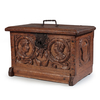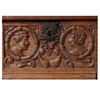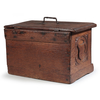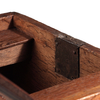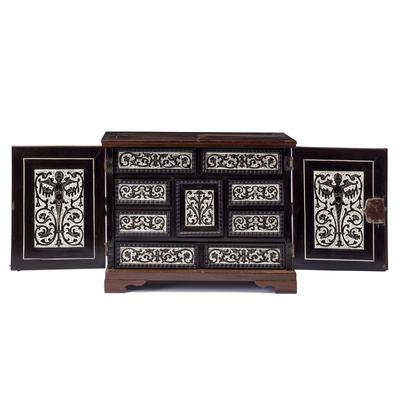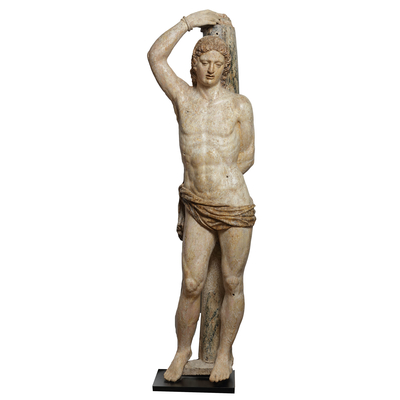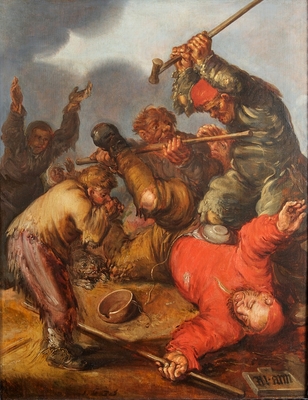Marriage casket
Global shipping available
- Origin
- Northern France
- Period
- 17th century
- Material
- Oak, forged iron
- Height
- 23 cm
- Width
- 35 cm
- Depth
- 24 cm
- Literature
B. Dubbe, J.W.M. de Jong & R. Meischke, Thuis in de late middeleeuwen - Het Nederlands burgerinterieur 1400-1535, Zwolle 1980, cat no. 276, p. 169, 170.
Questions about this object?
Please use one of the contact options below:
Description
A rectangular wooden Renaissance wedding casket with carved decoration. On the front are two medallions with the heads of a man and a woman facing each other. The medallions are surrounded by floral wreaths and scrolls. The man and woman both wear the same type of clothing. The man has a hat on his mid-length hair, the woman wears a bonnet or headband over her raised hair and a necklace with round beads. Between the portraits are two fruits. On the sides are two medallions with empty coats of arms, with the same corner decoration as above the portraits on the front. The back of the box is unfinished. The oak casket has a flat lid with a profiled rim. The rectangular handle is turned in the middle. Inside the chest are two compartments with lids along the length of the sides. The chest rests on two legs, with a pull-out and profiled drawer in between, spanning the entire length of the casket. This drawer is locked by a pin on the inside of the box. The casket closes with a wrought-iron lock and key; the lock plate is decorated with volutes and scrolls.
Considering the decorations, the casket is probably a wedding casket, which was made and presented on the occasion of an engagement or marriage ceremony. The casket was filled with valuables and given to the woman by her parents or the husband. After the wedding, the casket was used to store valuables, money and important documents. The drawer at the bottom of the casket can only be opened from the inside and provided additional and hidden storage. Similar Renaissance rituals surrounding marriage and engagement can be found all over Europe. In Italy, for instance, large and richly decorated chests, the cassoni, were ceremoniously given to the bride by her parents during the wedding. The cassone was filled with valuables and parts of the dowry and trousseau, such as sheets, clothes and precious cloth. The coffins were often painted with courtly scenes and scenes of married life. And in Friesland in the sixteenth century, richly decorated silver 'knottekistjes' were made. These small chests served as marriage proposals; the man gave the woman he had his eye on a 'knottekistje', which contained a beautiful cloth in which a few pieces of money were loosely knotted (hence the ‘knotte’). If the lady in question accepted the chest and pulled the knot tighter, the happy couple were engaged. The silver box remained in the possession of the lady.

